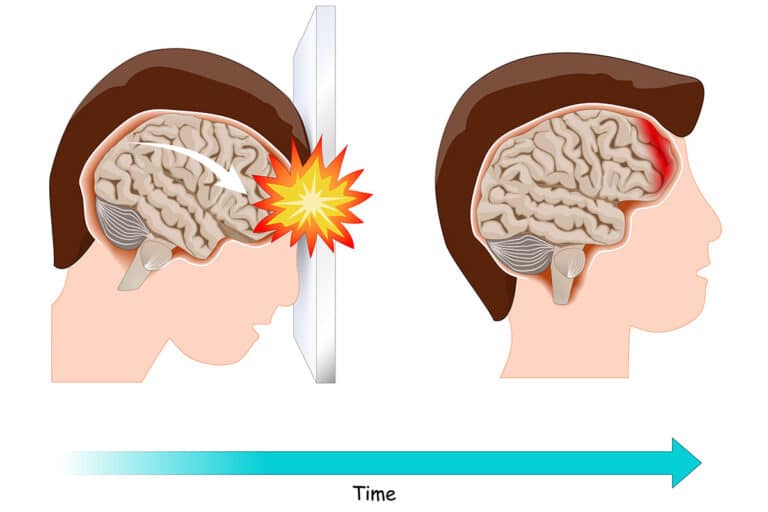Slipping on ice might appear comical in the movies, but in real life, a fall on the ice can be serious or fatal. According to the CDC, slips on ice and snow account for a million injuries a year–and 17,000 deaths. Most of these fatalities occur from head injuries resulting from the fall, many of which could have been prevented by seeking immediate medical care.
Head injuries sustained from falling on ice can range from minor to severe. Let’s take a look at some of the most common head injuries that can happen when you slip and fall on the ice.
Concussion
The most common type of ice-related head injury is a concussion, which occurs when the brain jostles back and forth inside the skull from an impact, sometimes damaging or bruising brain tissues in the process. A concussion may produce symptoms such as headaches, dizziness, fatigue, confusion, memory loss, and a ringing in the ears. The duration of these symptoms may be a few hours or last up to a few weeks. While we don’t often think of concussions as serious, even a mild one can cause disruptive symptoms–and a concussion can also weaken connective tissues, which can open the door to more serious damage with future blows to the head.
Cerebral Contusion
A cerebral contusion is another common head injury from falling on the ice. It occurs when a direct blow to the skull causes bleeding on the brain, which may lead to impaired thinking ability, paralysis, blindness, seizures, coma, and even death. Contusions may sometimes be removed through emergency surgery.
Hematoma
A hematoma is a swelling of clotted blood that forms when an outer blood vessel of the head ruptures from a blow, eventually putting pressure on the brain. A hematoma usually develops slowly over 24 hours and may be accompanied by a headache or nausea, along with vision changes or memory problems. While a hematoma may resolve on its own, it can cause permanent brain damage if it worsens. Emergency surgery can remove a hematoma and relieve the pressure.
Skull Fracture
Hitting the head with enough force on the ice can cause a skull fracture–an actual crack in the bone of the skull. Fractures may be mild and heal on their own, but they can also be dangerous because they can increase your chances of infection or bleeding in and around the brain.
What to Do If You Fall on the Ice
If you fall on the ice, you should get checked out by a doctor immediately, especially if you hit your head and even if you don’t have any immediate symptoms. Serious head injuries don’t always present symptoms right away, but they can cause death within days if not treated. You should also talk to a lawyer as soon as possible. If the ice you slipped on was present due to someone else’s negligence, you may also be able to file a slip-and-fall or premises liability claim to pursue the costs of treatment and recovery.
Our team of personal injury attorneys has plenty of experience helping head injury victims get the compensation they need. Call our offices today to schedule a free case evaluation.








